Bruce Lee Webb incorporates his love of hobo lore, train graffiti, folk traditions, and music to create works of art. Often executed on materials that had former lives as book pages, bed linens, tarps, and musical scores, he creates “memory vessels” to expose others to his eclectic interests.
For Webb’s Cell Series, he shares the following: "This series of artwork rings from my inspiration of Albany and the mysteries of West Texas. I had a show in Lubbock about 10 years back and spent a lot of time traveling the Bankhead Highway through Albany with all of its culture, spiritual definition and roadside attractions. It's one big Hootenanny from town to town and it's all the flavor of the waltz across Texas."
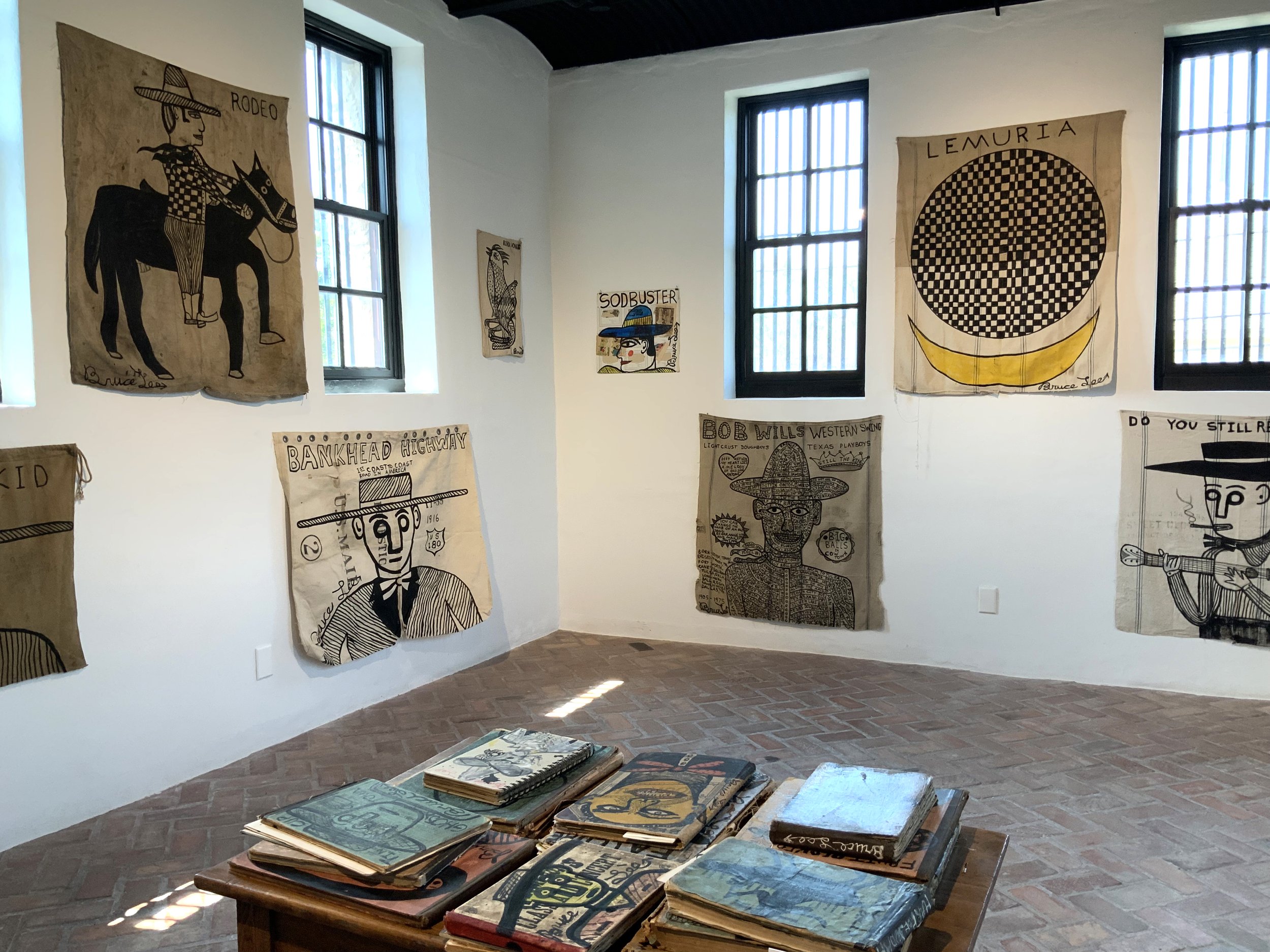
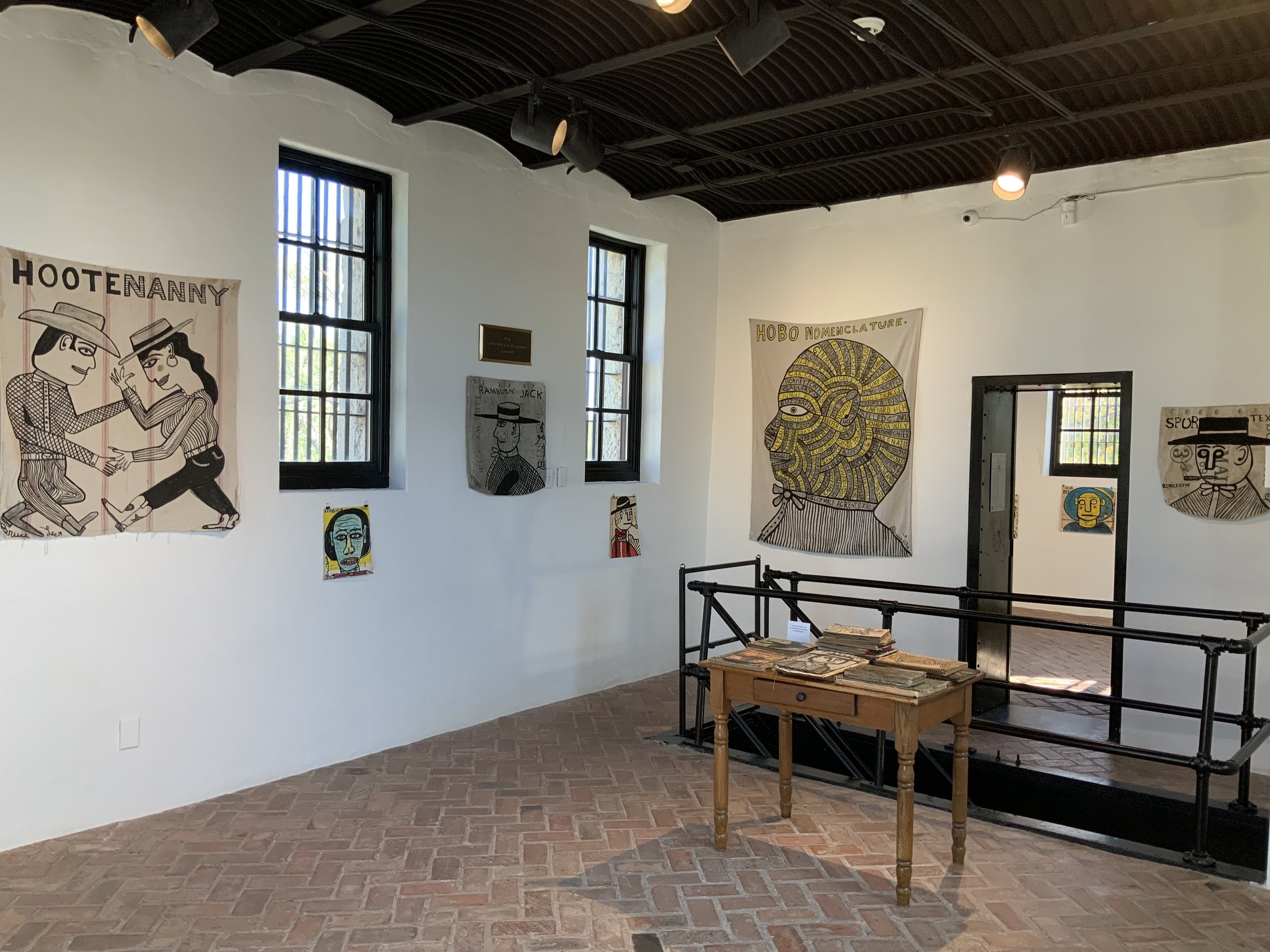
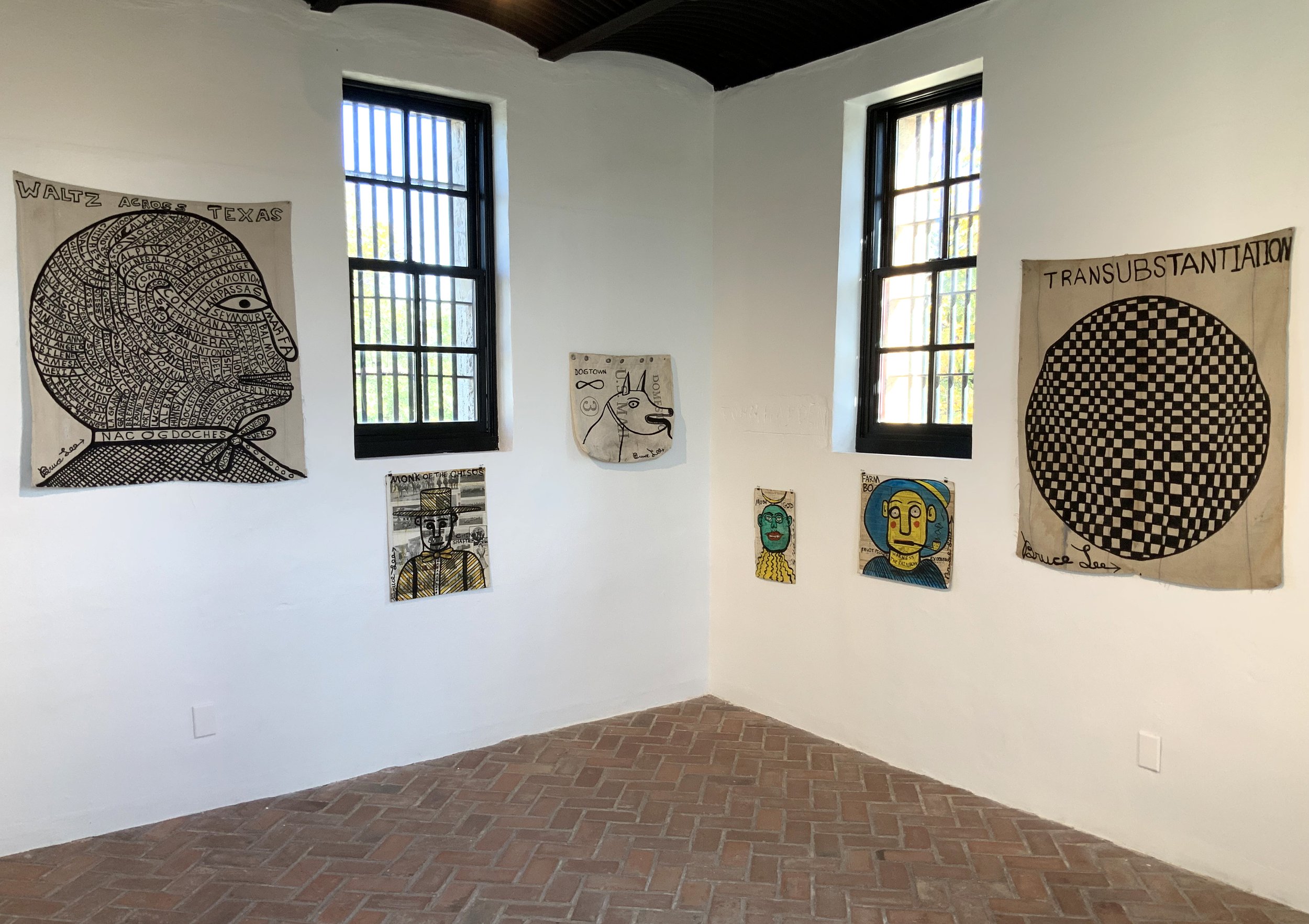
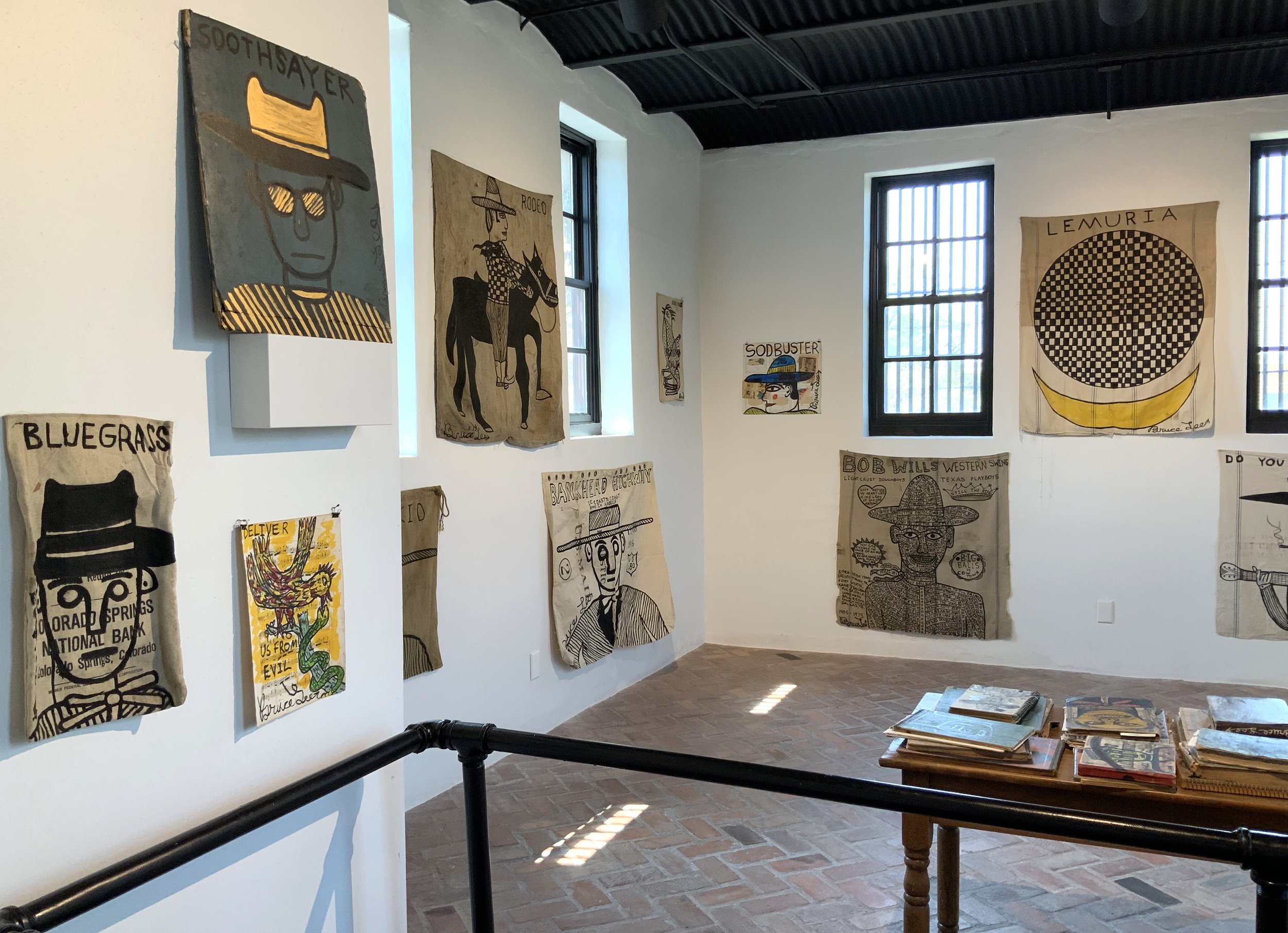
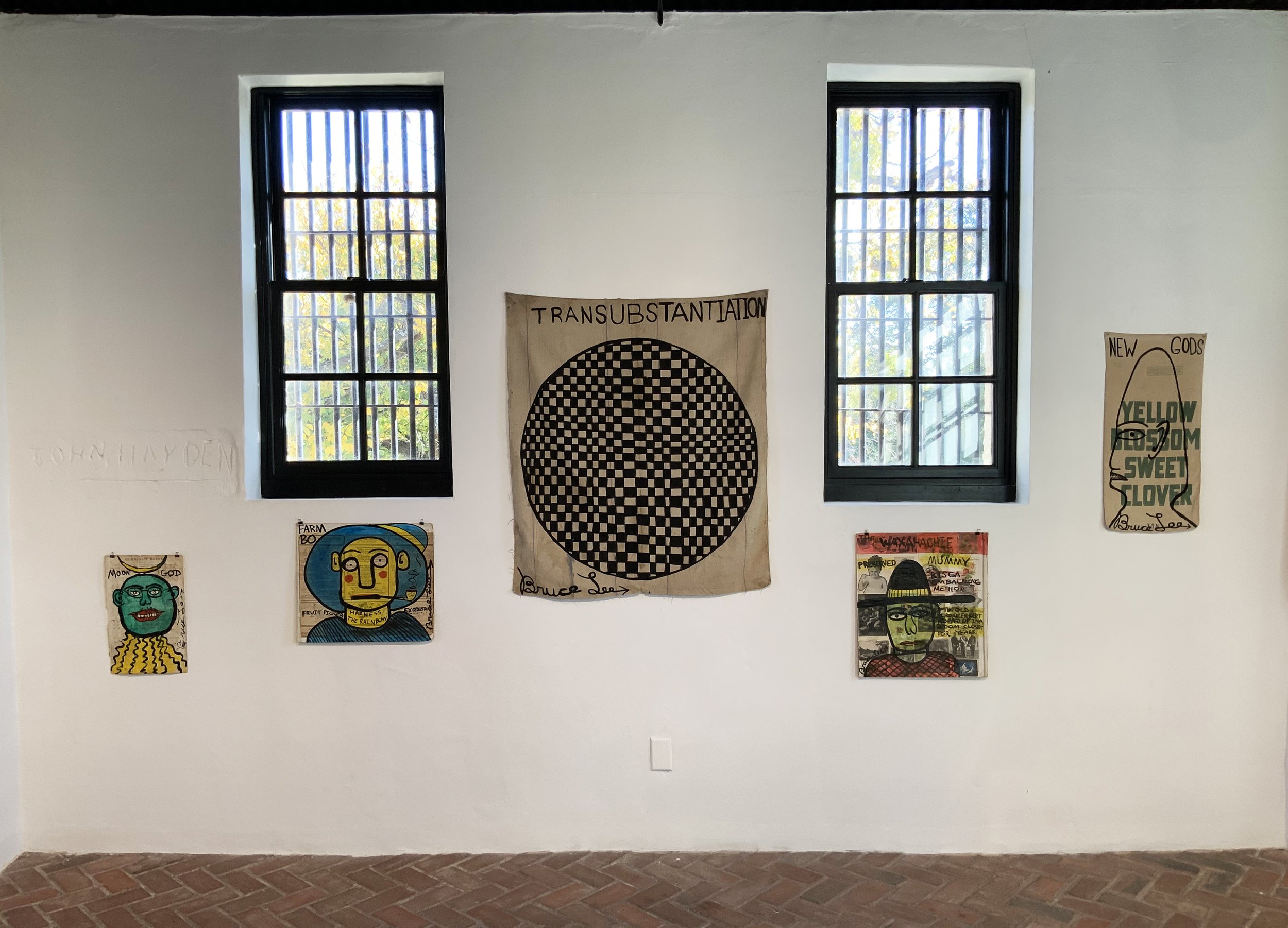
Patrick Kelly, Old Jail Art Center Executive Director and Curator, email interview with artist Bruce Lee Webb (January - February 2022)
PK: I often ask artists to convey things from their childhood that may have informed their work either directly or indirectly. I believe your parents were missionaries in India and collected objects from that culture. How did that, and any other things, influence you and your work?
BLW: My grandparents were missionaries to South India from 1930-1951 and my mother was born there.
I am an only child and throughout my youth, when visiting my grandparents in Waxahachie, I had all access to their immense collection of books on world religions. Many of the books were antique with beautiful engravings. The books fascinated me and I inherited the collection, which has influenced my personal additions to the library.
My subjects have broadened a bit with spiritualism and metaphysical, but the subject matter and the black and white engravings have continued to influence and expand my work.
PK: Before we expand on other influences, I’ve known you and Julie for at least 25 years and it was not until a few years ago I realized you were a visual artist. I’ve been meaning to ask if you started making works a few years ago or am I just obtuse?
BLW: I don’t think you are obtuse, you just knew me through our Gallery. I have been making art since the early 1980s—growing up in the Dallas punk rock world, where I began painting on clothing that I found at thrift stores. The profile head I paint now is essentially the same moniker I painted in my youth. I attended Richland College 1984-87, where I studied art, drawing, and design with Gordon Young, Mary Hatz, Tom Motley, and Dwayne Carter as my teachers.
I credit my main drive for making art to my Grandma. The many artists I have met and worked with at the gallery, that I have operated with my lovely wife Julie since 1990, have also inspired me.
I began showing my art in the early 1990s in Deep Ellum’s Artisana Gallery and at the McKinney Avenue Contemporary, both in Dallas. My early work was often painted with enamel and oil paint on found tin and plywood. When I moved my studio in 1994 to our downtown Waxahachie building with little ventilation for the curing paint, I began to paint with India ink on vintage canvas and paper, which is still my primary media. I have recently shown in Dallas, Austin, Marfa, Joshua Tree in California, and Huntsville, Alabama.
PK: We’ve discussed this before but does the demarcated head image derive in part from pseudoscience phrenology charts and models?
BLW: Yes. I've collected books on phrenology and sought out the antique phrenology heads and charts on this subject for many years. Then I've been playing and exploring filling the heads with various subjects that interest me.
PK: Those subjects vary, with many having a “Texas” theme. The larger works, created on vintage fabrics, portray the phrenology type portraits with your text delineating the head form. Your smaller works on paper though are on found print material. Are those created in part by your reaction to the existing text or imagery?
BLW: I began painting on road trips and bought a scrapbook that fascinated me at a flea market in Ohio. The heavy bound 24 x 24-inch book was a catalog from a 1908 tailor’s shop with illustrations of dapper men wearing the fashionable suits from that year. At some point in the book’s history, another artist collaged illustrations cut from early 1930s magazines onto the pages. It was in this scrapbook that I began to paint over and get a dialogue with the images and text that lie beneath. I’m not aware of the connections while I’m painting, but happy accidents do occur, it seems. I continue to seek out vintage scrapbooks to paint in. My work involves a joy I get in painting a repetition of forms and characters. The original hobo artist Bozo Texino, who worked in the railyards of the Missouri Pacific in Texas and obsessively drew a cowboy in the mid-nineteenth century, is a big influence. My work is about telling stories and preserving the forgotten lore of yesteryear.
Along with being an artist, Bruce is co-owner of Webb Gallery in downtown Waxahachie, Texas. His co-conspirator in this endeavor is his talented wife Julie. For the past 33 years they have operated the gallery as “an ever-changing shrine to the subconscious evolving to the conscious through art.” Bruce is also a researcher and collector of fraternal lodge art. He is co-author of As Above, So Below: Art of the American Fraternal Society. 1850-1930 with Lynne Adele and published by the University of Texas Press.
The 2021 Cell Series is generously supported by McGinnis Family Fund of Communities Foundation of Texas, Kathy Webster in memory of Charles H. Webster, National Endowment for the Arts, with additional funding from Jenny & Rob Dupree


